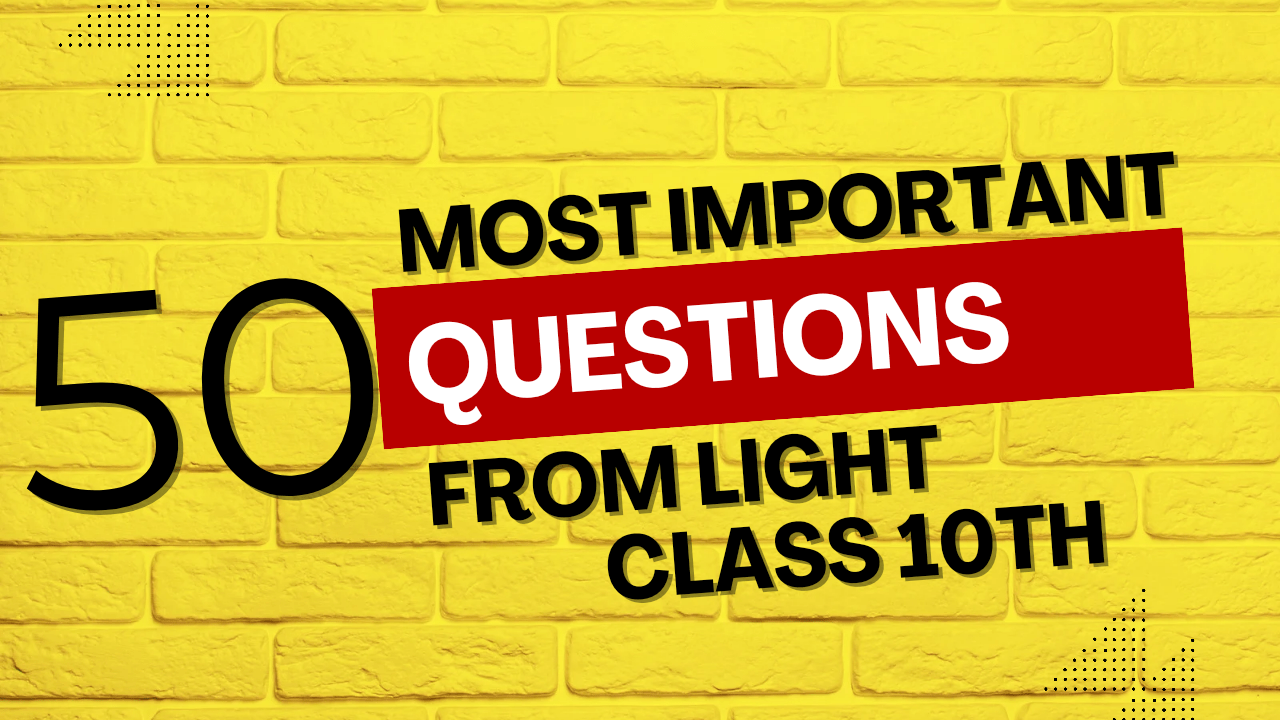Numerical on Power of a Lens Class 10 NCERT Solutions are as under:
Power of a Lens
The power of a lens is a measure of its ability to converge or diverge light. It is defined as the reciprocal of the focal length of the lens, measured in meters. The unit of power is diopters (D).
Expression for Power of a Lens
The power \( P \) of a lens is given by: \[ P = \frac{1}{f} \] where:
- \( P \) = Power of the lens (in diopters, D),
- \( f \) = Focal length of the lens (in meters, m).
Note:
- For a converging lens (convex lens), the focal length \( f \) is positive, and the power \( P \) is positive.
- For a diverging lens (concave lens), the focal length \( f \) is negative, and the power \( P \) is negative.
20 Problems with Step-by-Step Solutions
Problem 1
A convex lens has a focal length of 0.25 meters. Calculate its power.
Solution:
Given:
- Focal length, \( f = 0.25 \, \text{m} \).
Using the formula:
\[ P = \frac{1}{f} \] \[ P = \frac{1}{0.25} = 4 \, \text{D} \]Answer: \( P = 4 \, \text{D} \).
Problem 2
A concave lens has a focal length of 0.5 meters. Calculate its power.
Solution:
Given:
- Focal length, \( f = -0.5 \, \text{m} \) (negative for concave lens).
Using the formula:
\[ P = \frac{1}{f} \] \[ P = \frac{1}{-0.5} = -2 \, \text{D} \]Answer: \( P = -2 \, \text{D} \).
Problem 3
The power of a lens is \( +10 \, \text{D} \). Find its focal length.
Solution:
Given:
- Power, \( P = +10 \, \text{D} \).
Using the formula:
\[ P = \frac{1}{f} \] \[ f = \frac{1}{P} = \frac{1}{10} = 0.1 \, \text{m} \]Answer: \( f = 0.1 \, \text{m} \).
Problem 4
The power of a lens is \( -5 \, \text{D} \). Find its focal length.
Solution:
Given:
- Power, \( P = -5 \, \text{D} \).
Using the formula:
\[ P = \frac{1}{f} \] \[ f = \frac{1}{P} = \frac{1}{-5} = -0.2 \, \text{m} \]Answer: \( f = -0.2 \, \text{m} \).
Problem 5
A lens has a power of \( +2.5 \, \text{D} \). Is it a converging or diverging lens? What is its focal length?
Solution:
Given:
- Power, \( P = +2.5 \, \text{D} \).
Since the power is positive, it is a converging lens.
Using the formula:
\[ P = \frac{1}{f} \] \[ f = \frac{1}{P} = \frac{1}{2.5} = 0.4 \, \text{m} \]Answer: Converging lens, \( f = 0.4 \, \text{m} \).
Problem 6
A lens has a power of \( -4 \, \text{D} \). Is it a converging or diverging lens? What is its focal length?
Solution:
Given:
- Power, \( P = -4 \, \text{D} \).
Since the power is negative, it is a diverging lens.
Using the formula:
\[ P = \frac{1}{f} \] \[ f = \frac{1}{P} = \frac{1}{-4} = -0.25 \, \text{m} \]Answer: Diverging lens, \( f = -0.25 \, \text{m} \).
Problem 7
Two lenses of powers \( +3 \, \text{D} \) and \( -2 \, \text{D} \) are placed in contact. Find the combined power.
Solution:
Given:
- Power of first lens, \( P_1 = +3 \, \text{D} \),
- Power of second lens, \( P_2 = -2 \, \text{D} \).
The combined power \( P \) is:
\[ P = P_1 + P_2 \] \[ P = 3 + (-2) = 1 \, \text{D} \]Answer: \( P = 1 \, \text{D} \).


